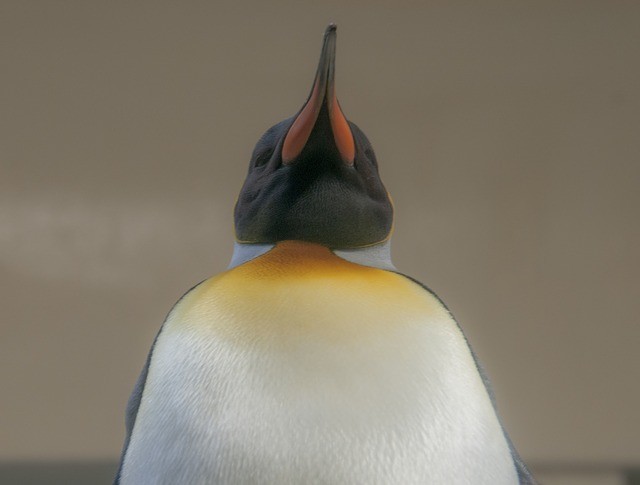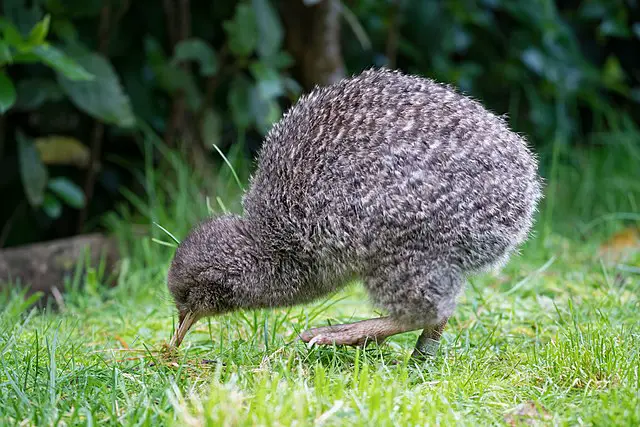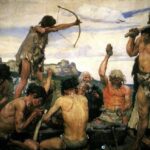Emperor Penguin is the largest penguin in the world that lives in the extreme cold of Antarctica. They have some interesting features, adaptations that allow them to bear and survive their extreme habitat. We have gathered a complete set of Emperor Penguin Facts For Kids that will help you in learning All About Emperor Penguins. You are going to learn about its scientific name, taxonomy, characteristics, appearance, size, weight, lifespan, habitat, colony, migration, diet, hunting, eating habits, lifecycle, swimming facts, reproduction, eggs, adaptations, survival, predators, endangerment and many other interesting facts about Emperor Penguin.
Emperor Penguin Facts For Kids
1. What Is An Emperor Penguin
- The emperor penguin is a penguin species that is only found in Antarctica.
- Of all the living species of penguins, it is the largest and heaviest.
- It is well-adapted to flourish in the Antarctic climate and reproduce during the winter season in Antarctica.
- Like other penguin species, emperor penguins can not fly and have adapted flattened flippers instead of wings for a marine habitat.
- It is a carnivore and primarily eats fish, as well as crustaceans and cephalopods.
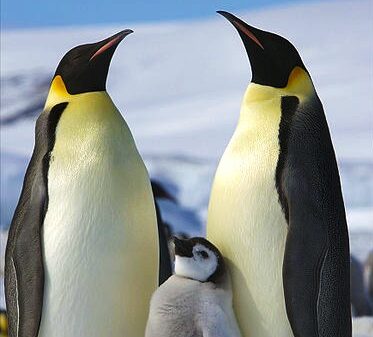
2. Emperor Penguin Scientific Name
- The scientific name of the emperor penguin is Aptenodytes forsteri.
3. Emperor Penguin Classification – Emperor Penguin Taxonomy
- The following is the scientific classification or taxonomy of the emperor penguin:
| Kingdom | Animalia |
| Phylum | Chordata |
| Subphylum | Vertebrata |
| Class | Aves |
| Order | Sphenisciformes |
| Family | Spheniscidae |
| Genus | Aptenodytes |
| Species | Aptenodytes forsteri |
4. Emperor Penguin Characteristics – Emperor Penguin Features
- Emperor penguin is the biggest of all penguin species and has 43 to 51 inches in height.
- It has a streamlined body like other penguins, which is well suited for swimming.
- Both males and females have similar size and plumage coloration.
- It is not a flying bird and has flippers in place of wings, which they use for swimming.
- Emperor penguins can swim at an average speed of 6 to 9 km/h.
- It is a social bird. They forage and breed together and also crowd together or hurdle to keep warm in the Antarctic winter.
- It has a thick fatty layer under its skin that insulates its body.
- Male individuals are responsible for incubating their eggs and most of them lose about 12 kg of weight while waiting for the hatch.
- Males and females make different sounds and can be easily distinguished with calls.
5. What Do Emperor Penguins Look Like – Emperor Penguin Appearance
- Emperor penguins have a tall and streamlined bodies.
- They have the head, back, and feet of black color, pale-yellow, bright yellow patches on the ears, and a white belly.
- It has about 8 cm long beak of black color.
- The chicks (baby emperor penguins) have a silver-grey color down (fine feather) and have a black head with a white mask.
- The juveniles have a white throat, chin, ear patches, and a black beak.
- Their wings are modified into flippers, which they use for swimming.
- They have short feet with strong claws.
- Males and females have the same size, plumage, and other characteristics.
6. Emperor Penguin Colors
- An adult emperor penguin has the head, back, and feet of black color.
- It has a pale-yellow color upper breast region, white belly, and bright-yellow color ear patches.
- The upper jaw or mandible of the beak is black while the lower one can be orange, pink, or lilac.
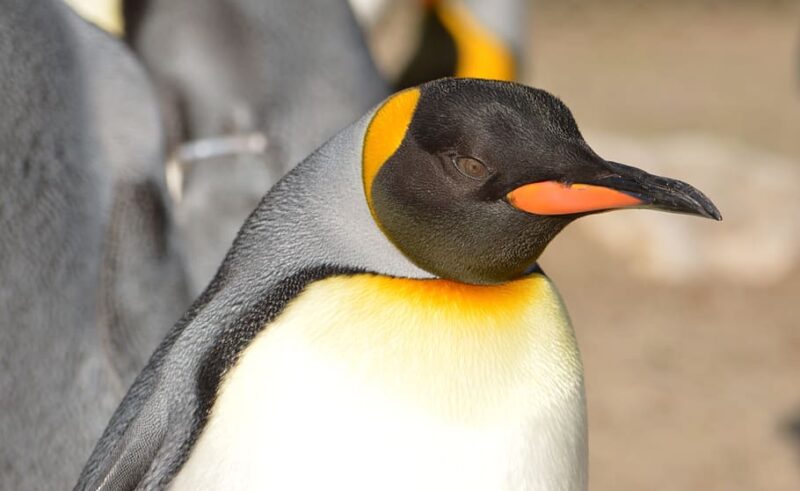
Emperor Penguin Eye Color
- Emperor penguins have brown eyes color.
7. How Much Does An Emperor Penguin Weigh – Emperor Penguin Weight
- An emperor penguin weighs from 50 to 100 pounds (22.7 to 45.4 kg).
- Males are heavier than females.
- It is ranked 5th in the living heaviest bird species.
8. How Big Are Emperor Penguins – Emperor Penguin Size
- The size of the emperor penguins ranges from 43 to 51 inches (3.5 to 4.2 feet).
Average Size Of Emperor Penguin
- The average size of an emperor penguin is 45 inches (3.75 feet).
Emperor Penguin Compared To Human
- An adult emperor penguin has up to 45 inches boy size with an average weight of up to 88 pounds.
- An adult male human has an average body size of 69 inches and has an average body weight of up to 137 pounds.
How Tall Are Emperor Penguins – Emperor Penguin Height
- The emperor penguins have 43 to 51 inches (110 to 130 cm) in height.
How Tall Are Emperor Penguins In Feet – Emperor Penguin Height In Feet
- The height of an emperor penguin in feet is 3.5 to 4.2.
How Tall Is The Tallest Penguin
- The tallest penguin species was the Colossus penguin (Palaeeudyptes klekowskii).
- It was a species of the extinct penguin genus Palaeeudyptes and had an incredible height of 6 feet.
- In the existent penguin species, the emperor penguin is the tallest and has a maximum height of up to 4.2 feet.
9. Where Do Emperor Penguins Live – Emperor Penguin Habitat Facts
- The emperor penguins live throughout the coasts of the Antarctic continent.
- Their habitat range is exactly between the 66° and 77° south latitudes.
- They make their breeding colonies usually in the regions where icebergs and ice cliffs are present probably to protect themselves from the strong winter winds.
- It is estimated that 35% of the emperor penguins’ population is found in the north of the Antarctic Circle.
- The number of their known colonies is 46 and is distributed around the Antarctic and Sub-Antarctic zones on the earth.
- The location of their main breeding colonies was: Cap Washington, Cap Colbeck, Column Island in Victoria land, Dibble Glacier, and Halley Bay.
- The northernmost breeding colony is found on Snow Island (located at the northern tip of the Antarctic Peninsula).
- Individual vagrant emperor penguins have been seen in South Georgia (a British overseas territory in the Atlantic ocean), Heard Island (Australia), and sometimes in New Zealand.
Where Do Emperor Penguins Live Map – Emperor Penguin Habitat Map
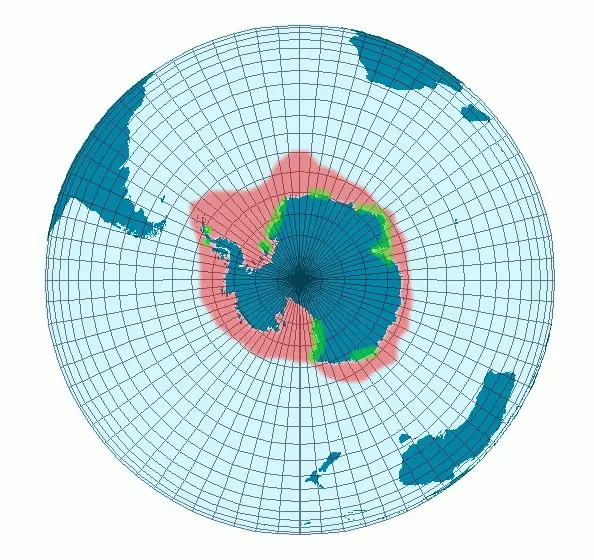
10. Emperor Penguin Colony Facts
- Emperor penguins are social birds and live together in the form of vast colonies.
- A colony is known as a “Rookery”, “Waddle”, or “Penguinery” and consists of thousands of members.
- The estimated range of individuals in a colony is from 5,000 to 10,000.
- In the harsh Antarctic winds, all the colony members form a huddled circle to keep warm. The youngest members reside in the middle while the adults stay outside. The adults slowly rotate in and out and take turns at the coldest outermost layer.
- There are 46 known colonies of emperor penguins in Antarctica.
- The colonies of the emperor penguins have been discovered and counted from space through satellite technology.
- A 2012 survey, which was led by British scientists, used special satellite technology and recognized the emperor penguin colonies from the poo strains.
- The survey discovered several colonies that were previously unvisited.
- Now it is thought that there are probably around 54 colonies of emperor penguins in Antarctica.
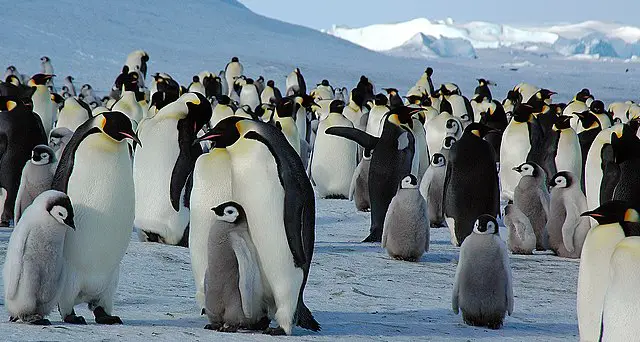
11. What Temperature Do Emperor Penguins Live In
- Emperor penguins live in the coldest region of the world.
- The average annual temperature range of their habitat is from -10° C to -60° C.
- The water temperature is about -1.8° C, which is much lower than their average body temperature (39°C).
12. How Far Do Emperor Penguins Migrate – How Far Do Emperor Penguins Walk
- Emperor penguins migrate as far as 60 to 100 miles (96 to 160 km) to reach the breeding ground.
- They start migration in March towards a designated breeding or nesting site.
- All the emperor penguin colonies go towards the same destination and arrive at about the same time.
- When traveling towards the breeding areas, emperor penguins often walk as far as 60 to 100 miles (96 to 160 km).
13. How to Do Emperor Penguins Sleep
- When an emperor penguin sleep, it typically tucks its bill behind in a flipper.
- Researchers say that this behavior may minimize the amount of heat loss through the nostrils and face.
- Emperor penguins increase their sleeping time during fasting to conserve energy.
- Males incubating the eggs spent most of their time sleeping.
14. How Long Do Emperor Penguins Live – Emperor Penguin Lifespan
- The lifespan or life expectancy of emperor penguins in the wild is up to 20 years.
- For an adult emperor penguin, the average yearly survival rate has been estimated as 95.1%.
- However, the survival rate of the chicks is only 19%, which means that only 19 of 100 chicks survive till their first birthday.
- In a study, it was estimated that up to 1% of the hatched emperor penguins could live for an age of 50 years.
How Long Do Emperor Penguins Live In Captivity – Emperor Penguin Lifespan In Captivity
- Emperor penguins are successfully held in captivity till 1960.
- Aalborg zoo in Denmark was the first place where emperor penguins were successfully held.
- An individual there lived for 20 years.
- They could be possibly live for about 40 years in captivity due to good care and abundant food supply.
Average Lifespan Of An Emperor Penguin
- The average lifespan of emperor penguins in the wild is from 15 to 20 years.
15. What Do Emperor Penguins Eat – Emperor Penguin Food – Emperor Penguin Diet Facts
- Emperor penguins primarily eat fish, crustaceans, and cephalopods.
- The composition of their diet changes from population to population.
- Usually, fish is their most important food source and often makes up the bulk of their diet.
- Antarctic silverfish (Pleuragramma antarcticum), code icefishes, glacial squid (Psychroteuthis glacialis), Antarctic krill (Euphausia superba), and Kodakovia longimana (a species of hooked squid) are the common foods of emperor penguins.
- An adult emperor penguin usually eats an average amount of up to 4.4 to 11.0 pounds (2 to 5 kg) of food per day.
How Often Do Emperor Penguins Eat
- Adult emperor penguins eat 2 to 5 kg of food every day.
- At the beginning of the breeding season, they consume as much as 6 kg of food per day to build up their body weight.
What Fish Do Emperor Penguins Eat
- Emperor penguins usually eat the Antarctic silverfish (Pleuragramma antarcticum), which often make up the bulk of their diet.
- The other fish species an emperor penguin commonly consumes are the members of the family Nototheniidae (code icefishes or notothens).
16. Emperor Penguin Eating Habits
- Emperor penguins get their food from the sea.
- They hunt in the open water of the Antarctic Ocean, either in the open water of the ice-free areas or in the cracks in pack ice caused by tides.
- They swim, walk, and slide from the feeding ground to the breeding site. If the feeding grounds are far away, they will use the seal holes and other openings to enter the sea and feed.
- The usual daily food intake of an adult emperor penguin is from 2 to 5 kg, however, it may eat up to 6 kg per day before the breeding season to build up its weight.
- The male emperor penguins may fast for 90 to 120 days during the period of courtship, breeding, and incubation.
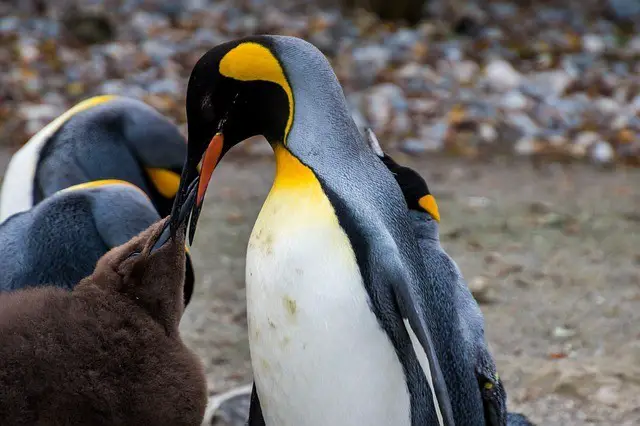
17. What Do Emperor Penguins Drink
- Emperor penguins drink seawater without any bad effects.
- They have a special and extremely effective gland under their eyes that removes excess salt from their bodies.
- The salt and fluid secretion often collect at their beaks in the form of droplets which they shake off.
18. How Do Emperor Penguins Get Their Food – How Do Emperor Penguins Hunt
- Emperor penguin catches its prey with its pointed beak while swimming and swallow it whole.
- Their rough spiky tongue and powerful jaws allow them to grip the slippery fish.
- Emperor penguins hunt together and may also coordinate their diving and surfacing.
- One of its hunting strategies is diving about 50 meters, where they can easily find sympagic fish, such as code icefish. These fish swim in the opposite direction of the bottom surface of the sea-ice. Emperors swim towards the bottom of the sea-ice and catch the fish. It repeats this method many times before surfacing to breathe.
19. How Long Can A Penguin Go Without Food
- Emperor penguins can go without food for 60 to 100 miles.
- Male emperor penguins are responsible for incubating the egg.
- After hatching and the arrival of the female back to the breeding site, the males have to go for the same distance (they covered to reach the breeding site) to reach the sea after the starvation of more than 120 days.
20. Emperor Penguin Swimming Facts
- Emperor penguins are excellent swimmers.
- Their aerodynamic body shape and strong flippers allow them to swim and glide over the water with fast speed and agility.
- When swimming, an emperor penguin exerts pressure with its upward strokes (flippers) as well as with its downward strokes (feet).
- The flippers work against buoyancy and help the emperor to maintain depth.
- It swims with an average speed of 6 to 9 km/h (3.7 to 5.6 mph).
- They can swim as fast as about 14 km/h (8.6 mph), however, they normally do not surpass 10.8 km/h (6.7 mph).
How Fast Can Emperor Penguins Swim
- Emperor penguins have been observed swimming with the fastest speed of 14.4 km/h (8.9 mph).
21. How Deep Can Emperor Penguins Dive
- Emperor penguins can dive deeper than any other bird species as deep as 550 meters (1850 feet).
- Mostly, they dive between 21 to 40 meters (68 to 131 feet).
- The recorded deepest dive of an emperor penguin was 565 meters (1,854 feet).
22. How Long Can An Emperor Penguin Stay Underwater
- Emperor penguins mostly stay underwater for 2 to 8 minutes.
- They sometimes also take long dives that last for up to 20 minutes.
- The recorded longest dive of an emperor penguin was for 27.6 minutes.
How Long Can Emperor Penguins Hold Their Breath
- Emperor penguins can hold their breath for about 20 minutes while taking a deep dive.
- Some researchers say that they can hold their breath for 22 minutes while driving.
23. Emperor Penguin Life Cycle Facts
- The lifecycle of emperor penguins starts when the shortening of the day-length in April at the arrival of the Antarctic winter stimulates the adults to travel towards the breeding sites.
- In May, a couple of birds mate, and the females lay only one egg.
- After laying eggs, the females transferred their eggs to the male partners and go off to feed in the sea as their food reserves are critically exhausted.
- The males incubate eggs for about 120 days until hatching in August.
- After a few days to one week of hatching, the females come back and take responsibility for the chicks while the males go off to the sea for feeding.
- Both the partners repeat this cycle 6 more times till the end of September or the start of October; one partner stays with the chick and the other one goes to the sea for feeding.
- The chicks form groups and huddle to stay warm while both of their parents forage at sea and periodically come back to feed them.
- In November and early December, the chicks moult to juvenile plumage. At this time, their parents do not feed them and left for the sea.
- At the end of December, the ice cover on the sea breaks up and the chicks become developed enough to get their food.
- They feed in the sea during the Antarctic summer from January to March, and then again start their travel in April towards the breeding site.
- The juveniles become sexually mature at the age of 3 years.
- Emperor penguins live for an average age of 20 years in the wild.
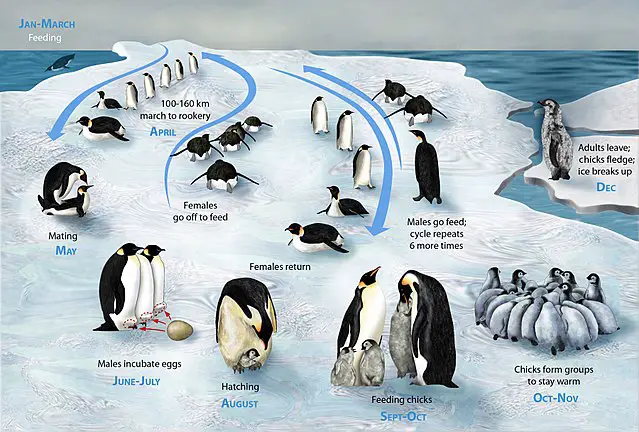
24. How Do Emperor Penguins Reproduce – Emperor Penguin Reproduction
- The emperor penguins are oviparous and the females lay eggs.
- From March to April, the male and female emperor penguins start courtship and usually mate only one time per year.
- From May to June, the female lay only one egg and then soon deliver it to the male partner and leave for the sea to feed.
- The male partner incubates the egg in his brood pouch for about 120 days until it hatches.
- Emperor penguin is the only penguin species, in which male partners have complete responsibility of incubating the eggs. In other penguin species, both male and female partners take their shifts and incubate their eggs cooperatively.
- After hatching, the father feeds the chick with a special curd-like matter produced in his esophagus until the mother returns.
- When the mother returns, the father transfers the chick to her and leaves for the sea.
Emperor Penguin Breeding Season
- The Antarctic winter is the breeding season for emperor penguins.
- At the start of the Antarctic winter in March and April, they begin their travel towards the breeding site.
- The length of the day is the stimulus for their travel.
- Whenever the day length becomes decreasing, they start their travel.
Emperor Penguin Courtship
- Emperor penguins begin courtship in March or April when the temperature is down as low as -40 °C (- 40 °F).
- A male gives an enrapture and delightful expression where it stands and keeps its head on its chest and then inhales and gives a courtship call for 1 to 2 seconds.
- It then walks around the colony and repeats the courtship call.
- A female then stands in front of the male and both hold their heads up in the same manner. If both are of similar size, they would look like a mirror image of one another.
- They remain in such a posture for several minutes and in this way their courtship develops.
- Once they become a couple, they walk together around the colony, with usually a female partner following the male and walking slightly behind.
How Do Emperor Penguins Mate
- Emperor penguins are serially monogamous and mate each year only once.
- Before mating, one partner bows deeply to its mate with its beak pointed close to the ground.
- The other partner then does the same and in such a way they mate.
- The mates remain faithful to each other, however, the loyalty between years is only 15%.
25. Emperor Penguin Egg
- Female emperor penguins lay eggs in May or early June.
- The egg weighs 1.01 to 1.04 pounds (460 to 470 g).
- The egg of the emperor penguin is the smallest of all bird species relative to the maternal size and constitutes only 2.3% of the mother’s body weight.
- The egg is pear-shaped, pale greenish-white in color, and has a size of about 4.7 inches × 3.2 inches (12 × 8 cm).
- The egg has a thick shell, which makes up 15.7% of the whole egg weight.
- Such a thick shell help to reduce the risk of breakage when a female transfers it to her male partner for incubation.
Emperor Penguin Egg Size
- The egg of an emperor penguin has a size of up to 4.7 inches (12 cm) in length and up to 3.2 inches (8 cm) in width.
How Often Do Emperor Penguins Lay Eggs
- Emperor penguins lay eggs only for a single time in the year.
How Many Eggs Do Emperor Penguins Lay
- Emperor penguins lay only a single egg.
How Many Babies Do Emperor Penguins Have
- Emperor penguins have only one baby.
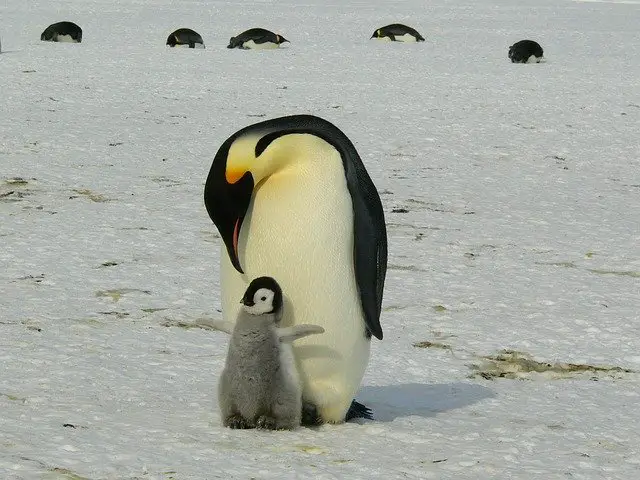
How Long Do Penguins Incubate Their Eggs
- After laying an egg, the female carefully transfers it to her male partner and immediately leaves for the sea as her food reserves are critically exhausted.
- The male partner takes charge of the egg, balancing it on the upper region of his feet and incubating it in his brood pouch.
- The process of incubation continues during the dark stormy Antarctic winter for 65 to 75 days until hatching.
How Do Penguins Hatch Their Eggs
- After the incubation of 65 to 75 days, the eggshell becomes soft and thin at some points.
- Whenever the father touches that point with his bill, the holes are formed.
- The completely formed chick also exerts pressure on the shell from the inside.
- The eggshell then split into two or many parts and the chick comes outside.
How Long For Emperor Penguin Egg To Hatch
- In emperor penguins, the process of egg hatching completes in a long time of 2 to 3 days, as their eggs have an extremely thick shell.
26. How Do Emperor Penguins Feed Their Young
- After hatching, the father feeds the chick with a curd-like material produced in his esophagus.
- This material is composed of up to 59% protein and 28% fats.
- The father feeds the chick for only about 7 days.
- When the mother returns, she takes the chick’s responsibility.
- She feeds him through regurgitation with partially digested fish, squid, and krill she stored in her stomach.
27. Emperor Penguin Adaptations
Emperor Penguin Behavioral Adaptations
- The Emperor penguin is a highly adapted social animal.
- Some of its unique behaviors help it to survive in the harsh Antarctic winter.
- The following are some of the behavioral adaptations of emperor penguins:
-
- Male individuals huddle together to stay warm while incubating their eggs. They jostle and equally take turns in the toasty middle region of the huddle. Their movement looks like the image of a giant hurricane. Huddling helps them to minimize body heat loss by about 50%. They are also observed for another behavior to conserve body heat. If the winds are strong, they close together and turn their backs to the direction of the wind.
- Unlike other penguin species, emperor penguins do not show any aggressive territorial behavior. They forage and nest together and also coordinate their diving and surfacing.
- They do not form any kind of nest and keep the egg and then chick warm on the top of their feet in their brood pouches.
- The males spend much of their time sleeping while incubating the egg. It helps them to conserve energy.
- The decreasing day length triggers the movement of emperor penguins towards the breeding site. They reproduce in the depth of the Antarctic winter so that the chicks become independent when the summer arrives.
Emperor Penguin Physiological Adaptations
- The following are the main physiological adaptations of the emperor penguins:
The unusual structure of hemoglobin
- Emperor penguins have an unusual structure of hemoglobin (an iron-containing protein in the Red Blood Cells that transports oxygen). It allows them to function properly at the extremely lower oxygen level in Antarctica.
Compact and solid bones
- Emperor penguins have solid and compact bones rather than air-filled ones. It reduces barotrauma (physical damage to body tissues due to pressure difference) while diving at a depth of 200 to 500 meters in the sea.
The ability to reduce the metabolism rate
- Emperor penguins can reduce their metabolic rate and conserve energy. When they are diving, their heart rate reduces to as low as 15 to 20 beats per minute, and the functions of non-essential organs shut down. It significantly reduces the oxygen use of emperor penguins and allows them to take longer dives.
A complex heat exchange system
- A complex system of heat exchange allows emperor penguins to recapture about 80% of heat in their nasal passage while breathing.
- Due to the heat exchange system, their legs and flippers are cooler than the rest of their body. It prevents the disproportionate heat loss from these body parts as the legs are touching the ice and the flippers are greatly exposed to the cold Antarctic air.
Male individuals can produce crop milk in their esophagus and feed the newly hatched chicks.
Emperor Penguin Physical Adaptations – Emperor Penguin Structural Adaptations
- The following are the major structural or physical adaptations:
Thick waterproof Plumage
- Emperor penguins have a thick and dense covering of scale-like plumage.
- The plumage is a combination of plumules (down feathers), afterfeathers, and counter feathers arranged in four overlapping layers.
- It provides 80 to 90% insulation and protects them from the strong Antarctic winds.
- On the land, strong muscles keep the feathers erect to trap air near the skin and reduce heat loss.
- Like many other Antarctic animals who have waterproof or windproof covering, the emperor penguins’ plumage is also waterproof and has water repellent qualities whenever it touches the seawater.
- In water, the upper part of the plumage becomes flattened and waterproofs the skin and downy layer.
The fatty layer beneath the skin
- Emperor penguins have a thick subdermal (under the upper skin) layer of fats that grows up to 3 cm thick before the breeding season.
- It not only provides insulation and protects heat loss but also acts as an energy reservoir in starvation.
Flippers
- The wings of emperor penguins are modified into flippers, which they use for swimming.
Aerodynamic body shape
- Emperor penguins have an aerodynamic body shape.
- It allows them to swim and glide over the water with good speed and agility.
- Such body shape also allows them deep diving. That is why the emperor penguin is the most deep-diving bird.
Feet
- The feet of emperor penguins do not freeze on the ice.
- Thick tendons in their feet protect them from getting much cooler and freezing.
- There is also a heat exchange system in their feet known as the “countercurrent heat exchange” to protect heat loss through the feet.
- Strong claws on the feet provide them a good grip on the ice surface.
28. How Do Emperor Penguins Survive – Emperor Penguin Survival
- Adult emperor penguins are equipped with many adaptations to survive in the harsh conditions of the Antarctic habitat.
- The survival rate of the chicks in the first year of their life is only 19%.
- In an emperor penguins’ colony, 80% of the population is usually composed of older and five-year adult individuals.
29. How Do Emperor Penguins Stay Warm
- To stay warm, the entire colony of emperor penguins huddles together.
- The younger individuals reside in the toasty interior region of the huddle while the adults take equal turns into the interior to stay warm.
- When there are strong winds or blizzards, they turn their backs outside and closely overlap on each other to stay warm.
30. How Do Emperor Penguins Protect Themselves
- A fatty layer under the skin of emperor penguins protects them from the cold when they are in the water.
- On the land, they protect themselves by puffing out their feathers to trap more air and get better insulation.
- Underwater, their dark feathers on the back look similar to the dark depths of the ocean while their white bellies look like the sunlight reflection on the ice and provide them protection against predators.
31. Emperor Penguin And Humans
- Like other penguin species, the emperor penguin was also the target of humans until the late 20th century.
- It was hunted for its fats to produce oil.
- Now, emperor penguins have only two potential predators; the killer whale and leopard seal.
- Currently, their population is marked as stable, however, climate change due to human activities is destroying their habitat.
- In some areas, human activities cause a disturbance and threaten them; such as the presence of scientific bases near their habitat and movements of the aircraft over their colonies.
32. Are Emperor Penguins Dangerous
- No, emperor penguins are not dangerous.
- They are not known for any kind of aggressive behavior towards other animals or humans.
How Friendly Are Emperor Penguins
- Emperor penguins are neither friendly nor harmful to humans.
- Their natural habitat is Antarctica where no humans live except for the scientists in research stations there.
- Very few humans encountered emperor penguins, and they say, the presence of humans does not alarm them.
33. What Eats Emperor Penguins – Emperor Penguin Predators
- Birds and aquatic mammals are the predators of emperor penguins.
- Sea leopard or leopard seal (Hydrurga leptonyx) eat healthy adult emperor penguins and juveniles.
- Large sharks and orca or killer whales (Orcinus orca) attack emperor penguins of any age if they are undersea or near the sea.
- The Antarctic giant petrel or southern giant petrel (Macronectes giganteus) is the major land predator of the emperor penguins’ chicks. In some colonies, they are responsible for the death of one-third of chicks. They also eat the carrion of adult emperor penguins.
- The south polar skua (Stercorarius maccormicki) mainly eats the dead chicks. They also sometimes attack the weak and sick chicks.
34. Emperor Penguin Endangered Facts
- Emperor penguins are not included in the list of endangered species, however, their status on the IUCN Red List is “Near Threatened”.
- Climate change due to global warming is a major threat to their survival.
- In the last 30 years, the sea ice cover has been reduced by over 60% in parts of Antarctica.
- The frozen sea ice is the breeding site of emperor penguins.
- At least ¾ of their breeding colonies are at risk due to the forecasted future changes in the sea ice cover.
- Increasing temperatures can affect the hatching times of the emperor chicks, and they may hatch at times of food shortage and would have fewer chances of survival.
Are Emperor Penguins Endangered – Why Are Emperor Penguins Endangered
- No, emperor penguins are not endangered.
- Emperor penguins are not endangered, however, climate change due to global warming would be a major threat to their survival.
- Emperor penguins breed during the Antarctic winter. If the ice melted before the full growth and independence of the chicks, they would die.
- If the chicks die, there would be no future for emperor penguins.
Emperor Penguin Conservation Status
- The emperor penguin conservation status is “Near Threatened” on the IUCN Red List of Threatened Species.
35. Fun Facts About Emperor Penguins
- Emperor penguin is a giant (tallest and heaviest) of all penguin species.
- In 2012, British scientists used a special satellite technology to recognize the colonies of emperor penguins from the poo stains they left on the ice.
- An emperor penguin finds its mate in the thousands of individuals huddled together at the breeding site through a unique voice they developed during courtship.
- Emperor penguins are excellent climbers and can easily climb the vertical ice steeps. Their several colonies have been discovered on the ice shelves.
- The shortening of the days at the beginning of the winter stimulates emperor penguins to start travel towards the breeding site.
36. Interesting Facts About Emperor Penguins
- Emperor penguin is the 5th heaviest species in the living birds.
- Emperor penguin is the only penguin species that breed in the depth of the dark Antarctic winter.
- They do not build any kind of nest. Male individuals incubate eggs as well as keep the immature chicks on the top of their feet in brood pouches.
- If the parents do not provide the warmth of their brood pouches to their chicks, the chicks would not tolerate the Antarctic cold and would die in just a few minutes.
- Emperor penguin is the only penguin species, in which the males can produce crop milk to feed the newly hatched chicks. The other bird species that have such abilities are pigeons and flamingos.
- As the chicks grow to youngsters, both of their parents go to forage in the sea and leave them in groups called “crèches”
- Emperor penguin is the most deep-diving bird species and dives as deep as 565 meters.
- Their population is estimated as 595,000 adult individuals.
- The number of their worldwide colonies is estimated as 54.
- Most of their colonies have been discovered from space.
37. Emperor Penguin Images – Emperor Penguin Pictures
